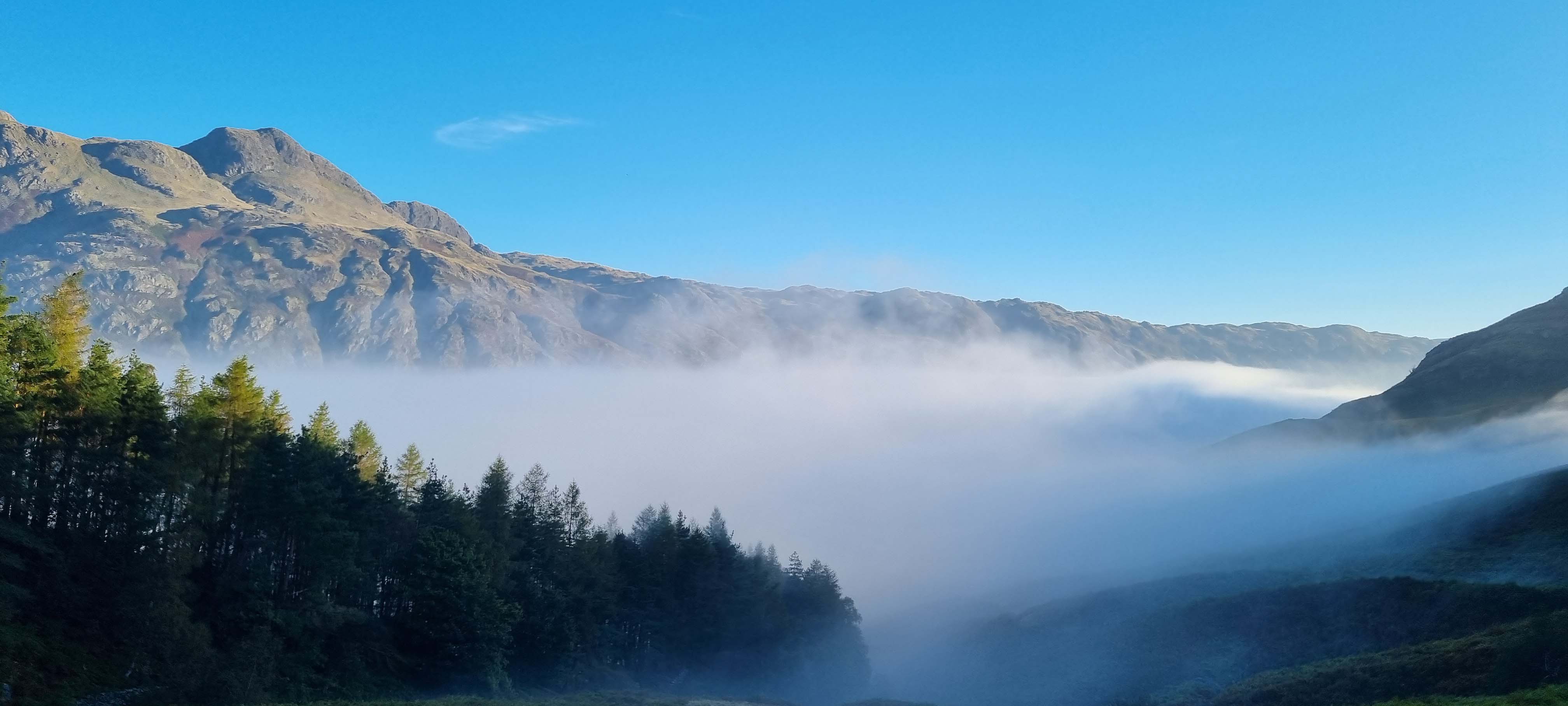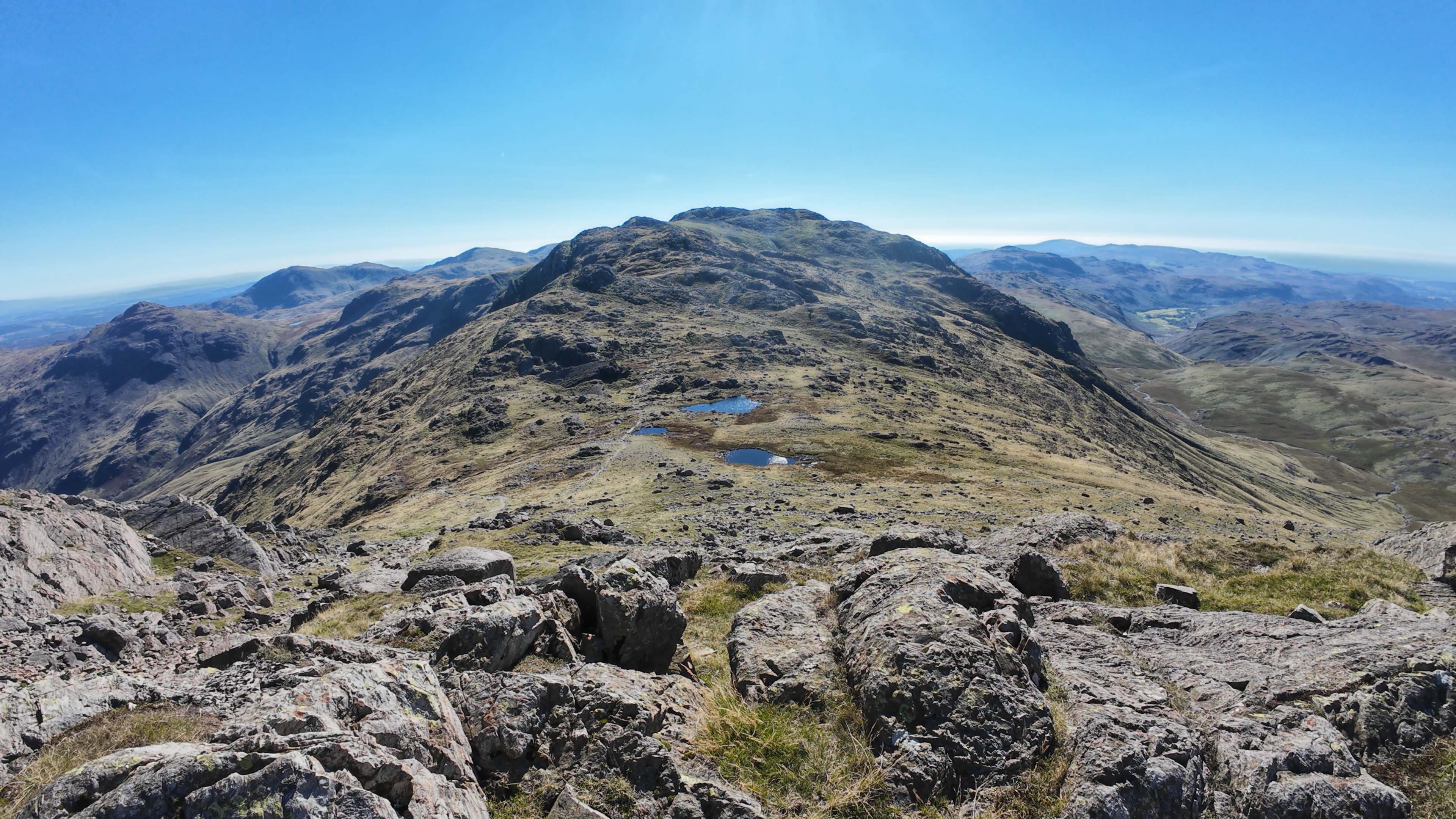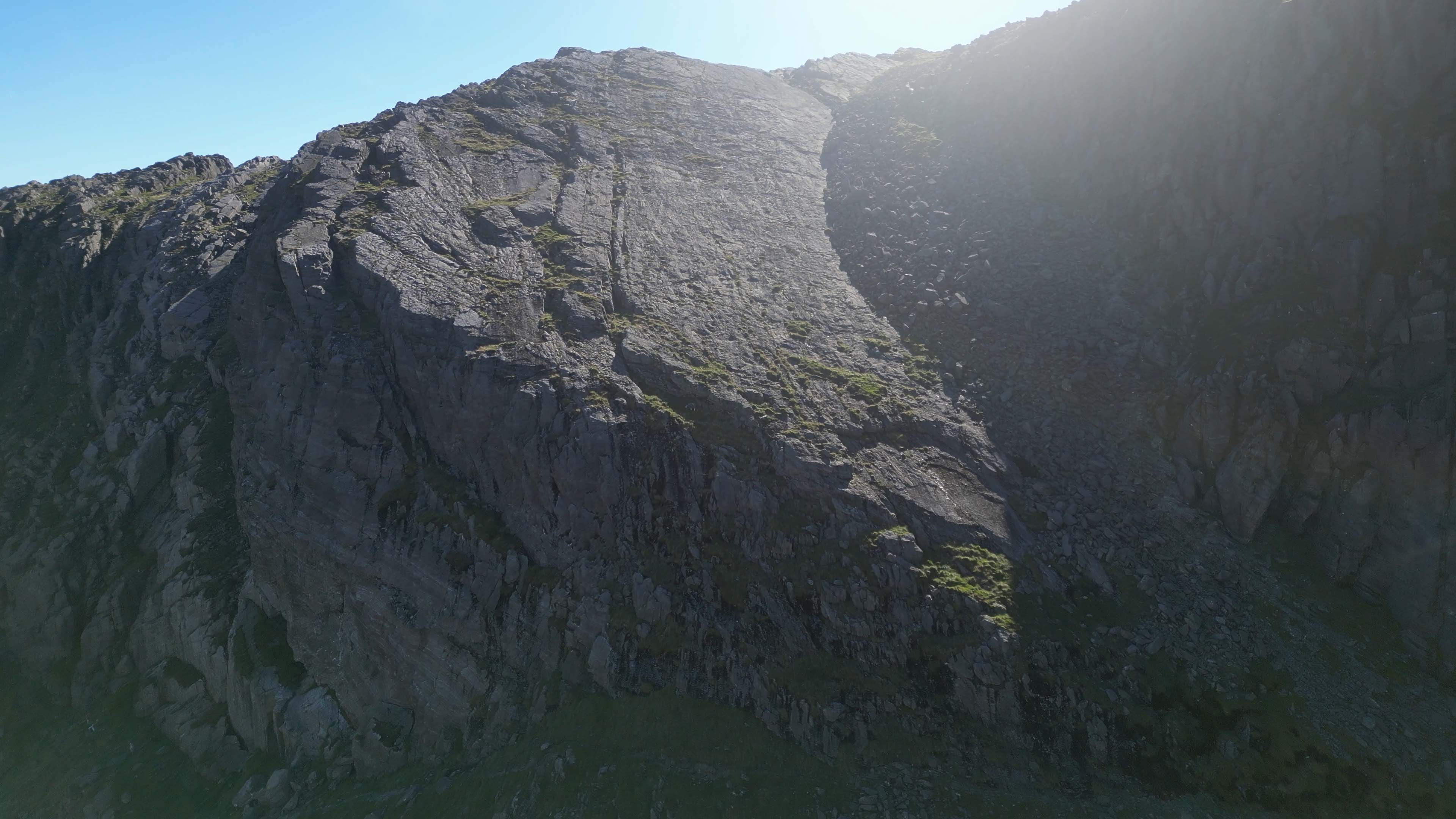Bowfell via Pike Of Blisco and Crinkle Crags (Bad Step)
This blog post details my hike starting at Old Dungeon Ghyll Hotel and heading to Bowfell via Pike of Blisco, Crinkle Crags, Bad Step and the Great Slab, then returning via Climbers Traverse in the Lake District. I provide insights into each location's height, geological features, and challenges.
Pike of Blisco

I started my hike from the National Trust car park near the Old Dungeon Ghyll Hotel, which I thought would be a good starting point for my hike, problem was you had to pay either by an app or phone number or pay via cash. The problem is what happens when you have no reception or are unable to make a call and paying by cash does not give you any change. This hike took place on the 18th Sept 2024 and when I set off the valley was shrouded in fog, but when I got above the fog, the views where amazing. Pike of Blisco, is 2,313 feet (705 metres) high and offers stunning views of the surrounding fells. Its name originates from old Norse: "pike" meaning a sharp hill and "blisco" possibly referring to a "blessing." Despite its relatively modest height compared to other fells in the region, Pike of Blisco presents a steep and rugged climb that has captivating views of the Great Langdale Valley. The path up is rocky but manageable, and it’s a favoured summit for those seeking a challenging yet achievable hike.
Crinkle Crags

From Pike of Blisco, my walk continued towards Crinkle Crags, a distinctive range whose name is derived from the five "crinkles" or rocky peaks that form its skyline. The highest point of Crinkle Crags is 2,818 feet (859 metres), providing one of the most dramatic ridge walks in the Lake District. The jagged edges of the crags create a unique profile that distinguishes it from the smoother slopes of neighbouring fells. As Wainwright noted in his Pictorial Guide to the Lakeland Fells, Crinkle Crags offers “a ridge of great character” a sentiment shared by many who take on this walk.
The path from Pike of Blisco passes through grassy slopes and rocky patches before the crinkles come into view. The ridgeline is not just scenic but also provides a more challenging terrain, with a series of rocky outcrops and drops. Crossing the Crinkles was great fun, and there is a path around if you need it. The crags themselves, formed by millennia of erosion, offer a stunning geological contrast to the smoother fells in the distance.
Bad Step
One of the most memorable features of Crinkle Crags is the infamous Bad Step, a rock face that walkers must scramble over to continue the ridge route. Its name reflects the difficulty it presents to hikers, particularly those less comfortable with scrambling. The Bad Step requires careful hand-and-foot coordination to navigate the smooth, vertical rock. For many, it is a moment of tension on an otherwise straightforward walk, but conquering it adds to the sense of achievement. According to Wainwright, the Bad Step is a “serious obstacle to the ordinary walker” but he adds that it can be bypassed if necessary.
Scrambling up the Bad Step is an exhilarating experience. The rock face is steep, but the natural footholds, while narrow, provide enough grip to make the climb manageable. The smooth surface of the rock is a reminder of the glacial forces that shaped this landscape. After navigating the step, the path eases off, leading to the next crinkle.
Bowfell
From Crinkle Crags, I continued to Bowfell via the tranquil Three Tarns. These three small mountain pools sit in a saddle between Crinkle Crags and Bowfell, and it was peaceful just sitting there for a while. At 2,960 feet (902 metres), Bowfell is one of the highest peaks in the Lake District, and its name is believed to mean "the fell of the bow" in reference to its curved shape. Wainwright describes Bowfell as "a mountain of perfect proportions" and the climb up from Three Tarns certainly affirms that view.
The path towards Bowfell is steep, with loose stones underfoot, once you reach the summit, the views are impressive. To the east, you can see Scafell Pike towering in the distance, and to the west, the Irish Sea glimmers on the horizon. The summit itself is rocky, and as such, offers a perfect place to rest and take in the grandeur of the Lake District.
Great Slab

Just below Bowfell's summit lies the Great Slab, a vast expanse of smooth rock that stretches diagonally across the mountain's eastern face. The slab was formed by glacial action during the last ice age, which smoothed out the rock surface, leaving it exposed as the glaciers retreated. Its scale is awe-inspiring and is very steep to walk on so be careful. The sheer size of the slab, combined with its gradient, makes it one of the most striking geological features in the Lake District.
Walking across the Great Slab, I was struck by its sheer immensity. The rock surface is steep, sloping downwards into the valley below. From this vantage point, the entire Langdale Valley opens up before you, with distant peaks lining the horizon. The slab’s formation is a testament to the power of nature.
Climbers Traverse
The Climbers Traverse is a narrow path that skirts around the western side of Bowfell, offering a more adventurous route for walkers. This path avoids the summit, but you can climb up to Bowfell via the Great Slab. While not a climb in the technical sense, the traverse requires a steady foot and a head for heights, as the drop-off to one side is significant.
Walking the Climbers Traverse offers a different perspective of Bowfell. The path is narrow, with steep slopes dropping away to the valley below and the Great Slab visible from a unique angle. The traverse is exhilarating and fun, but you do need to be careful if taking this route.

